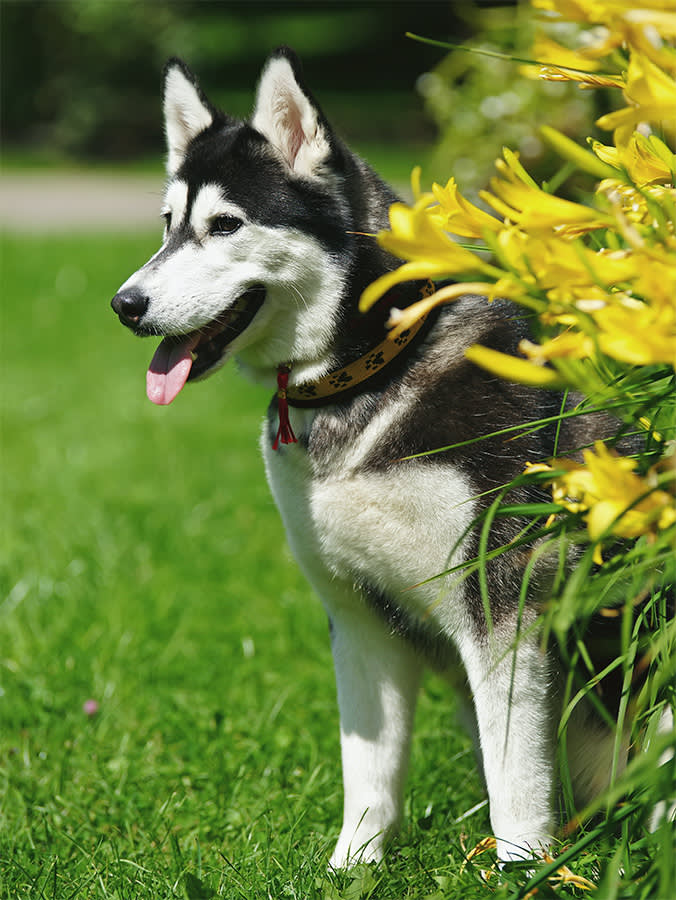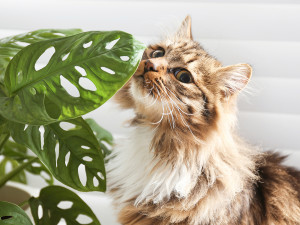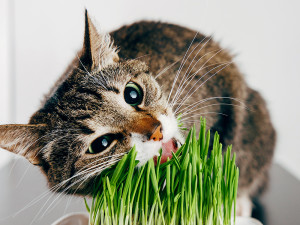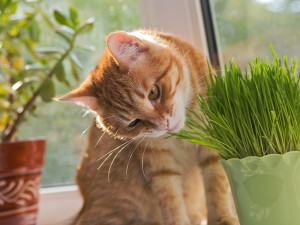Are Lilies Toxic to My Dog?
This is one of those “no, but also yes” answers. Read on.
Many pet parents have heard that lilies , but when it comes to whether these flowers are toxic dogs, you might have a big ol’ question mark. Fortunately, most true lily varieties are not toxic to dogs. Some false lilies can be dangerous for dogs, though, so learning the distinction between these plants is important.
What should I do if my dog has eaten lilies?
Knowing when to be concerned about lilies can be difficult because many plants that have “lily” in their name are not really part of the Lilium species. If eaten, true lilies can cause mild vomiting in dogs but are considered non-toxicopens in new tab. Some false lily varieties can cause a wide range of symptoms, from intense gastrointestinal signs to heart arrhythmias.
Diagnosing lily poisoning in dogs
The first step in diagnosing lily poisoning is identifying the type of lily your dog was exposed to. If you’re not super into plants and are unsure of the name of the plant, you can talk to a knowledgeable friend, call a local garden center, or consult a plant identification website or app for help.
Once you’ve figured out what your dog ate, contact your veterinarian’s office, a local emergency vet clinic, or an animal poison control centeropens in new tab to figure out if your dog is in any danger and what should be done. If your dog is showing any symptoms, just take them to the vet first and figure out the rest later.
Symptoms of lily poisoning in dogs
The symptoms of lily ingestion will vary based on the type of lily eaten. Some common symptoms and the lilies that cause them include the following:
Mild vomiting:
True lilies (Lilium spp.), including Easter, tiger, Asiatic, and stargazer lilies
Day lily (Hemerocallis spp.)
Canna lily (Cannaceae spp.)
Oral irritation, tongue swelling:
Peace lilies (Spathiphyllum spp.)
Calla lilies (Zantedeschia spp.)
Severe vomiting and diarrhea:
Lily of the Nile (Agapanthus africanus)
Plantain lily (Hosta plantaginea)
Cardiac arrhythmia, weakness:
Lily of the Valley (Convallaria spp.); can also cause vomiting
Treatment
Treatment for lily ingestion will vary based on the type of lily ingested and the dog’s symptoms. Dogs with mild vomiting may not require any treatment or could be treated with an anti-nausea medication alone. Dogs with tongue swelling may need to be monitored in the hospital and given pain control medication. More severe vomiting and diarrhea may require hospitalization for anti-nausea medication and IV fluids. Cardiac arrhythmias may require ECG monitoring, heart medication, or even a temporary pacemakeropens in new tab.
Why are lilies dangerous to dogs?
Some false lilies contain different toxins that make them dangerous for dogs to ingest or chew on:
Peace lilies and calla lilies are full of calcium oxalate crystals, which are tiny crystals that cause severe irritation to any tissues they contact, most commonly in the mouth, throat, and stomach.
Lily of the Nile contains alkaloids, which are most concentrated in the bulb of the plant, and cause GI upset and abdominal pain.
Plantain lilies are coated in saponins, which are bitter-tasting substances that plants use to protect themselves from curious animals.
Lily of the valley is the most dangerous of the false lilies. They’re full of cardiac glycosides, which affect the heart’s normal rhythm.
How to prevent plant poisoning:
The best way to prevent plant poisoning is to check to make sure that any plants you bring into your indoor or outdoor environment are safe for your dog. Do this before you bring the plant home, not after splurging at a local nursery. Even well-behaved dogs may get curious about a new plant, so keeping dangerous plants away from them is safest.
Are all parts of lilies poisonous to dogs?
In toxic false lilies, all parts of the plant should be considered poisonous. Some plants may have increased amounts of toxin in a certain area (like the alkaloids in the bulb of the lily of the Nile), but it’s best to assume that no part of a toxic plant is safe for your dog.
How do I stop my dog from eating lilies?
The best way to stop your dog from eating lilies is to keep them out of your dog’s environment. If this isn’t entirely possible, keeping them elevated enough that your dog can’t reach them and monitoring any leaves or flowers that are about to drop can help to prevent problems.
If your dog happens to chew on an unknown or toxic plant, having a “drop it” or “leave it” cue in your arsenal can be helpful. This cue can be trained at any age and is great for recovering things your sneaky pup snatches.
The bottom line: Are lilies poisonous for my dog?
True lilies are not toxic to dogs, but many plants with “lily” in their name are not true lilies. Some of these false lilies are toxic to dogs and must be avoided if you have a dog in your house. Always check on the safety of new plants with your vet’s office or the ASPCA Animal Poison Control’s Toxic and Non-toxic Plantsopens in new tab resource.
Other plants that are safe for dogs:
Spider plants (Chlorophytum comosum) don’t require much care, are safe for dogs, and can brighten up any home.
Boston ferns (Nephrolepis Exaltata, also known as the sword fern) love hanging in airy spaces with some indirect sunlight and can be enjoyed without having to worry about your dog.
Rosemary (Salvia rosmarinus) is safe to plant in your dog’s yard or outdoor balcony. This flavorful herb loves sunlight, smells wonderful, and is non-toxic to dogs.
Other Plants That Are Potentially Dangerous
Sago palm (Cycas revoluta) is one of the deadliest decorative plants that dogs can encounter. All parts of the plant are toxic and can cause acute liver failure.
Cyclamen (Cyclamen spp.) are beautiful flowering plants but can cause significant problems for dogs. This plant induces vomiting and diarrhea in dogs that eat small amounts, but larger ingestions can result in heart arrhythmias, seizures, and death.
Dumb cane (Diffenbachia spp.) contains calcium oxalate crystals. Similar to peace lilies, chewing on these plants will cause oral and GI irritation, vomiting, and possible swelling of the tongue.
FAQs (People Also Ask):
What happens if a dog eats lilies?
Mild vomiting may be seen in dogs that eat true lilies. Other plants with “lily” in their name can be toxic to dogs and cause a variety of problems.
How many lilies are toxic to a dog?
Any ingestion of foreign plant material can cause vomiting in dogs. Other toxic effects vary based on the amount ingested and the size of the dog.
Can lilies be toxic?
True lilies are not toxic to dogs but are to cats. Many other lily varieties can be toxic to dogs.
Can dogs eat lilies?
Dogs should not eat lilies. Although true lilies cause only mild stomach upset, many other plants with “lily” in their name are toxic to dogs.
Can dogs eat lilies safely?
Dogs should not eat houseplants. While true lilies may only cause mild vomiting and are not toxic, many other plants with “lily” in their name are toxic to dogs.
Are lilies poisonous to dogs if they smell them?
Lilies are not toxic to dogs if they smell them, but the pollen of peace and calla lilies could cause significant eye irritation if it gets in a dog’s face.












